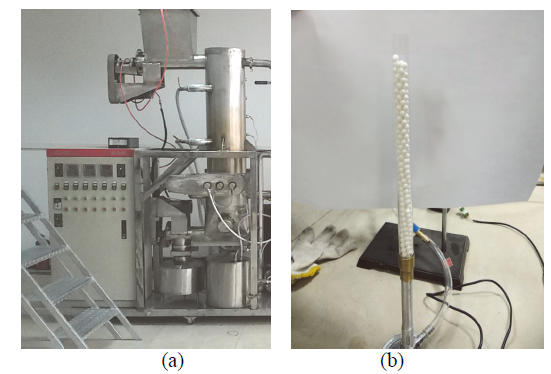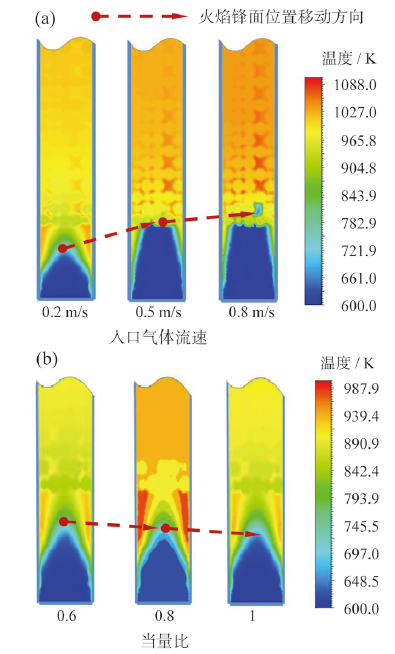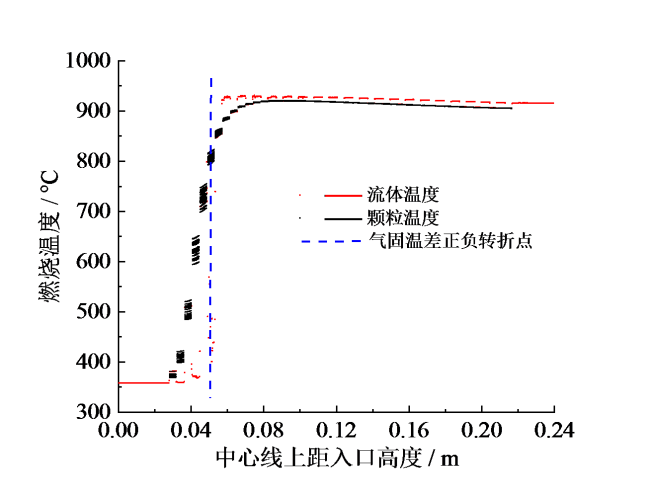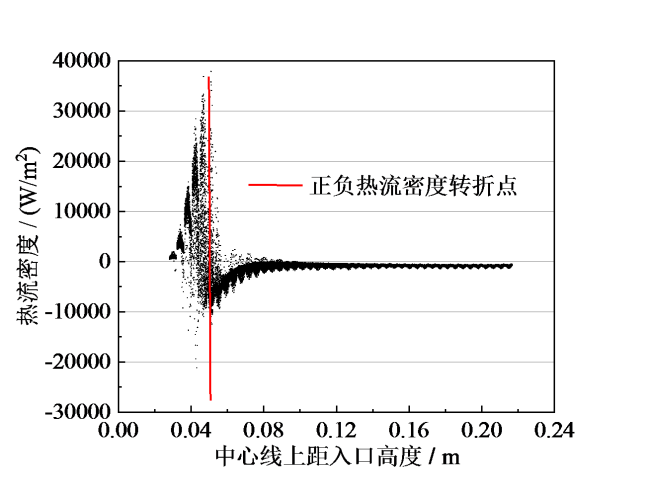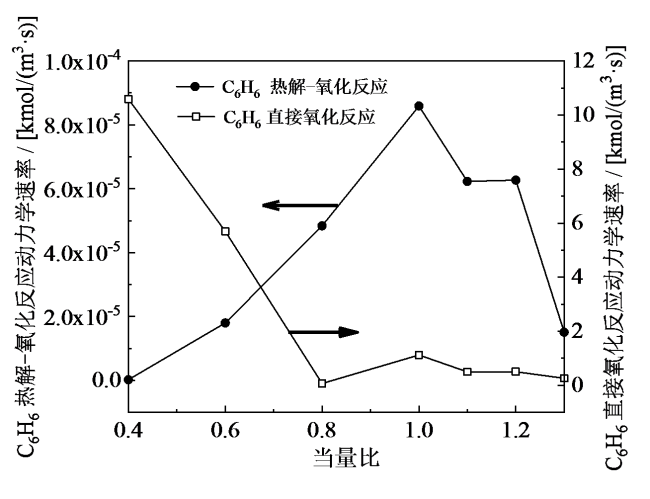
0 引言
1 生物质热燃气多孔介质燃烧数值模拟
1.1 固相颗粒堆积多孔介质模型
Fig. 1 The model of combustion reactor in porous media图1 多孔介质燃烧反应器模型 |
1.2 含焦生物质热燃气预混燃烧模型
1.3 直燃过程中焦油反应模型
| 编号 | 化学反应 | A | βr | Er / (kJ/mol) | a | b |
|---|---|---|---|---|---|---|
| R4 | C6H6 + 2H2O → 1.5C + 2CO + 2.5 CH4 | 3.9 × 1016 | 0 | 4.4 × 102 | 1.3 | 0.2 |
| R5 | C6H6O → CO + 0.4C10H8 + 0.15C6H6 + 0.1CH4 + 0.75H2 | 1.0 × 107 | 0 | 1.0 × 102 | 1.0 | 0.0 |
| R6 | C10H8 → 7.38C + 0.275C6H6 + 0.97 CH4 + 0.98H2 | 3.4 × 1014 | 0 | 3.5 × 102 | 1.6 | 0.0 |
| R7 | C6H6 + 4.5O2 → 6CO + 3H2O | 2.4 × 1010 | 0 | 1.3 × 102 | -0.1 | 1.9 |
| R8 | C6H6O + 4O2 → 6CO + 3H2O | 9.2 × 106 | 0 | 80.0 | 0.5 | 1.0 |
| R9 | C10H8 + 7O2 → 10CO + 4H2O | 9.2 × 106 | 0 | 80.0 | 0.5 | 1.0 |
1.4 控制方程与边界条件
Table 3 Main component concentration and calorific value of biomass gasification gas at inlet boundary of the model表3 模型入口边界处生物质气化燃气主要组分浓度与热值 |
| CO / % | H2 / % | CH4 / % | CO2 / % | O2 / % | 高位热值 / (kJ/Nm3) |
|---|---|---|---|---|---|
| 15.5 | 13.8 | 2.8 | 15.1 | 0.3 | 7 780.24 |
2 结果与讨论
2.1 生物质热燃气多孔介质燃烧试验与模型验证
Fig. 2 (a) Biomass hot gas generator; (b) porous media combustion experiment图2 (a)生物质热燃气生成装置;(b)多孔介质燃烧试验 |
Table 4 The test measurement data of component concentration and calorific value of biomass gasification gas表4 生物质气化燃气热值及组分的试验测量值 |
| 高位热值 / (kJ/m3) | 低位热值 / (kJ/m3) | CO / % | CO2 / % | O2 / % | H2 / % | CH4 / % | N2 / % |
|---|---|---|---|---|---|---|---|
| 4 227.7 ~ 8 468.8 | 3 892.8 ~ 7 874.0 | 11.8 ~ 18.4 | 11.1 ~ 14.1 | 0.2 ~ 0.3 | 12.8 ~ 13.6 | 2.86 ~ 3.61 | 49.6 ~ 47.7 |
Fig. 3 The relationship between porous medial combustion temperature and equivalence ratio in experiment图3 试验过程中多孔介质燃烧温度与当量比的关系 |
Fig. 4 The relationship between the simulated combustion maximum temperature and equivalence ratio图4 仿真燃烧最高温度随当量比的变化规律 |
2.2 生物质热燃气多孔介质直燃特性分析
Fig. 5 The temperature distribution and flame propagation characteristics of biomass hot gas combustion in porous media under different inlet gas velocity (a) and different equivalence ratio (b)图5 不同入口气体流速(a)和不同当量比(b)下生物质热燃气多孔介质燃烧过程温度分布与火焰传播特征 |
Fig. 6 Relationship of combustion maximum temperature and inlet gas velocity at equivalence ratio of 0.8图6 当量比为0.8条件下燃烧过程最高温度随入口气体流速的变化规律 |
Fig. 7 The temperature variation law of fluid and particles on the central line of combustion reactor图7 流体与颗粒在燃烧器中心线上的温度变化规律 |
Fig. 8 The variation law of heat flux density on the central line of combustion reactor图8 燃烧器中心线上热流密度变化规律 |
Fig. 9 The relationship between outlet boundary carbon monoxide emission characteristics and equivalence ratio图9 出口处CO排放特性与当量比的关系 |
2.3 焦油燃烧与脱除特性分析
Fig. 10 The relationship between outlet boundary tar emission characteristics and equivalence ratio图10 出口处焦油排放特性与当量比的关系 |
Fig. 11 The kinetic rate variation law of tar oxidation and pyrolysis-oxidation with equivalence ratio图11 焦油氧化和热解-氧化反应动力学速率与当量比关系 |





